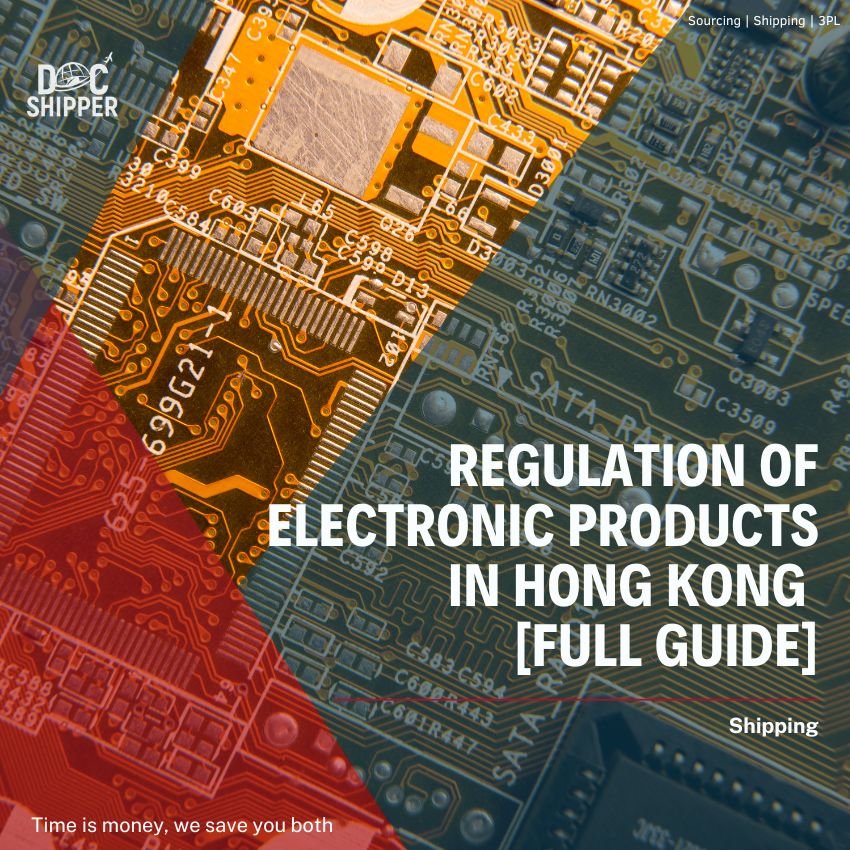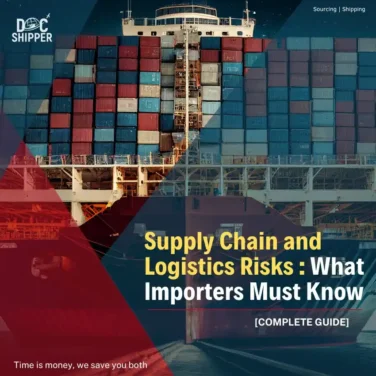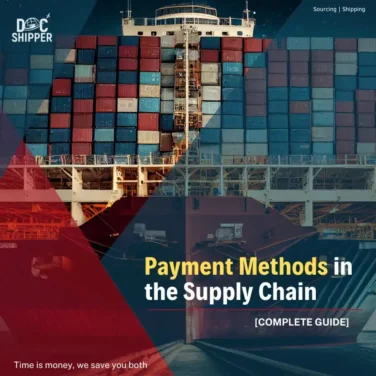Do you want to transport and sell electronic items in Hong Kong? As with any transport to a foreign country, there are regulations regarding these electronic products.
They therefore come from a specialised body in this field called EMSD (the Hong Kong Electrical and Mechanical Services Department). The standards used most often come from the Electricity Ordinance of this same department but, as we will see later, international laws can just as easily be applied.
So what are the rules to follow in order to be compliant? There are many requirements to be met. We explain all the safety requirements, standards and documentation on this subject in this article.
There is an FAQ at the end of this article and Docshipper and its specialists are always available to answer any further questions you may have.
Enjoy your reading!
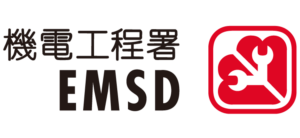
To which goods does this regulation apply?
The field of application of the Regulation includes the following product categories:
- Electric lighting
- Fluorescent lamps
- Household appliances
- Power tools
- Information technology equipment
For each product category and operating frequency, the regulations provide for an upper interference voltage limit.
The main objective of this regulation is to reinforce the public safety of electrical products. Thus, each actor involved in the transport of one of these products (manufacturers, importers, wholesalers or retailers of electrical products) must ensure the conformity of the products.
The Electrical Products Regulations require that all electronic products and equipment placed on the market in Hong Kong are properly designed, constructed, labelled, assembled, connected and insulated to avoid electrical and non-electrical dangers that could threaten consumers if used properly.
We will therefore proceed by referring mainly to the regulation that applies to
- All electrical products that are designed for domestic use as well as
- Those manufactured or supplied in Hong Kong (including those imported or intended for export)), and
- Those with a voltage of 50 volts or more in alternating current or 120 volts or more in direct current.
In addition, the Regulation does not apply to electrical products operating at very low voltage.
DocShipper Tip
Comment le prix influence-t-il l'achat ?
You should know that DocShipper has a service called 3PL (Third Party Logistics), a service in which you can hand over the entire preparation of your logistical routing and, which is of particular interest to us here, the conformity of your electrical products. Interested in our services or need personalized information? Our experts will answer you within 24 hours.
Types of electronic products
The EMSD regulation stipulates that all household electrical products must comply with the safety requirements put in place by the EMSD to protect users from defective or dangerous products. Thus, they are separated into 2 categories of products: “prescribed products” and “non-prescribed products”.
Prescribed products
Certain types of household appliances are of a particular nature and more likely to present dangerous behaviours and are therefore classified as “prescribed products“. These types of products must include not only the essential requirements, but also so-called “specific” safety requirements. This type of products therefore includes :
- Plugs,
- Adapters,
- Sockets,
- Flexible cords,
- Extension cords and
- Unvented thermal storage water heaters.
Non-prescribed products
All other household electrical products other than the six prescribed product types listed above are considered “non-prescribed products“.
Thus, for some specific types of electrical products, additional safety requirements are stipulated in the Regulations. For example, a 110 V electrical product must carry a warning label.
DocShipper Tip
Comment le prix influence-t-il l'achat ?
For all your logistics operations, don’t hesitate to contact our DocShipper agents! Our logistics department will be happy to help you with all your requirements.
What are the safety requirements to remain compliant?
The safety requirements applicable under the Electrical Products (Safety) Regulations are generally of three main types: essential safety requirements (which all electrical products must comply with), specific safety requirements (which apply to a certain type of product known as “prescribed”) and finally those applicable to particular types of electrical products.
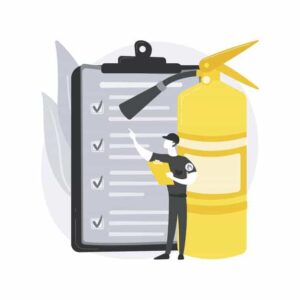
Essential safety requirements
These are the requirements that all electronic products must meet and comply with. They must all, without exception, be :
- correctly marked, assembled, connected and insulated ;
- designed and constructed to prevent electrical and non-electrical hazards, i.e. to ensure that there are no risks related to criteria such as temperature, radiation or hazardous materials; and
- build to meet the intended mechanical requirements, to withstand non-mechanical influences under the intended environmental conditions, to cope with foreseeable overload conditions and to have stability such that they can be held in a defined position.
Specific safety requirements
For prescribed products, in addition to the “essential safety requirements”, they must comply with “specific safety requirements”. The following is a summary of some of these requirements which can be found in detail on the EMSD website:
- Plugs must generally be either 13 Amp rectangular 3-pin plugs or 5A or 15A round 3-pin plugs, to match Hong Kong’s plug systems.
- Adapters should generally be of the 15A, 13A or 5A type, to match Hong Kong’s socket systems.
- For sockets, they should be appropriately marked in accordance with relevant standards and made of suitable materials. For example, the construction and dimensions of the sockets must comply with specific standards (including IEC60061-2 in this case).
- For non-ventilated electric thermal storage heaters, in addition to the requirements for marking and installation instructions, they must be equipped with adequate protective devices and have a guaranteed test pressure.
These are just a few examples of the 6 prescribed products subject to the essential AND specific requirements. You can find all these specific standards on the official EMSD website.
Safety requirements applicable to particular types of electrical products
Finally the last safety requirement which applies this time to certain particular types of electrical products, other than the previous 2 we have seen before. They therefore include the following:
- All electrical appliances must be Class I or Class II products.
- For any electrical goods designed to be supplied by a socket outlet, the plug must comply with the “Specific Safety Requirements”.
- For an electrical product that is designed to be plugged directly into an outlet, the plug shall be of the 3-pin type and comply with the prescribed requirements.
- For an electrical product designed only for use at a voltage lower than 200V. Indeed, it should be noted that this type of product is not suitable for the 220V domestic power system in Hong Kong. Therefore, it shall bear a warning label as shown below, when supplied in Hong Kong
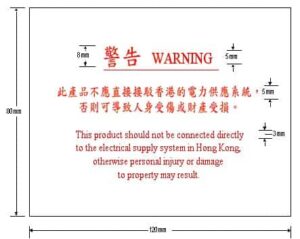
DocShipper Info
What Are Material Classes in Electricity?
Labelling and warnings
While we are on the subject of warnings, let’s take a brief look at the labelling of these household products. It should be noted that the Regulation does not provide for unified standards for the labelling of electrical products. Only certain electrical products are specifically required to carry certain warnings or labels.
For example, some electrical products that are supplied in Hong Kong operate differently from Hong Kong households, i.e. they have a different electrical voltage. There may therefore be a potential hazard.
The EMSD therefore requires warning labels to be affixed to warn consumers of this potential danger.
Of course the label must be attached to the product or packaging in a clearly visible manner. In addition, the size of the warning label must be larger than 120 mm by 80 mm.
An example of a warning label is given in the previous paragraph.
Interested in our services? Need personalized information?
Our experts will answer you within 24 hours

Documents required for the safety compliance of electrical products
The Safety Compliance Certificate
In order to prove that a product complies with the above requirements, the regulation requires suppliers to ensure that a “safety compliance certificate” has been issued before it can be supplied to the market.
This certificate is therefore a document intended to verify the conformity of electrical products authorised by the EMSD. It is thus a certificate proving that a domestic electrical product complies with the mandatory standards and requirements in Hong Kong.
Again there is a small difference between prescribed and non-prescribed products but in this case it is slight.
For a prescribed product (remember that these are 6 particular products that are considered to be potentially dangerous or to become dangerous), the following documents will be accepted as a certificate of conformity, i.e. :
- A declaration of conformity issued by a “recognised manufacturer” i.e. a manufacturer certified to ISO 9002 and accredited by HOKLAS; or
- A certificate or test report issued by a “recognised certification body“
For a non-prescribed product, the two documents just mentioned can be used, but a declaration of conformity issued by the manufacturer of the product, for instance HOKLAS-accredited testing laboratory, can be added to the list.
As a final point on this topic, suppliers must keep a record of the safety compliance certificate and submit it to the Electrical and Mechanical Services Department (EMSD) when required.
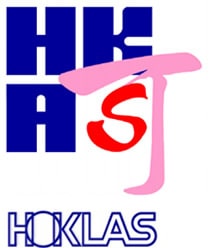
DocShipper Info
Why Choose HOKLAS Accreditation?
HOKLAS or Hong Kong Laboratory Accreditation System. HOKLAS is an accreditation scheme operated by the Hong Kong Accreditation Service (HKAS).
Additional security requirements
Not all the points we have noted above are the only ones that should be kept in mind. The EMSD therefore stipulates other additional safety standards, i.e. in addition to specific international safety standards for certain types of electrical products (especially household products) that are more likely to cause electrical and/or fire dangers.
Safety of lighting products
The EMSD establishes product safety, documentation and labelling requirements for lighting products under its regulations.
Safety standards
Depending on the type of lighting, their forms (we can mention fixed or portable lights), different standards will be used. One can refer to the EMSD but in this case also to international laws.
Lights safety compliance certificates
As with prescribed and non-prescribed products, luminaires must have a valid Certificate of Safety Compliance(CSC). in order to import into Hong Kong. The requirements for this certificate are the same as for general household electrical products discussed above.
The declaration of conformity must therefore include the following information
- Brand name
- Model/lot number
- Commercial information of the manufacturer/importer
- Date of issue
- Relevant test reports
Labelling and warnings
This is additional information that you may need to include on the product label:
- Rated voltage
- Rated power
- Rated frequency
- Model number and bulb type
- Traceability mark (manufacturer’s name/mark)
These are just a few examples of information you may need to include on the label.
Telecommunications regulations
A final specificity that can be raised relates to telecommunications, in other words interference control. This specific regulation has been designed to regulate electromagnetic interference between telecommunications equipment and other electrical products.
Standards
As with lighting, this regulation adopts internationally recognised standards
Laboratory tests
In order to receive the safety conformity certificate, the same conditions apply as before (declaration of conformity issued by the manufacturer or issued by a recognised certification body)
Here again, importers of electrical products may well request an assessment of their products by a HOKLAS-accredited laboratory such as
- The Hong Kong Standards and Testing Centre
- CMA Industrial Development Foundation
- SGS Hong Kong
DocShipper Alert
Are You Complying with EMSD Standards?
Warning ! In the event of misconduct, the EMSD is able to intervene and make several claims. The EMSD order is allowed to require the supplier of a product that does not comply with any of the requirements or standards discussed above to inform the persons to whom it supplied the product, to accept the return of the product and to reimburse them.
In addition, any person who violates the regulation is liable to a fine of $100,000 and imprisonment for one year on a first conviction. If the person re-offends, the fine will increase to $500,000 and imprisonment for two years.
A person who supplies an electrical product for which a safety compliance certificate has not been issued is liable to a fine of $10,000
FAQ | Regulation of electronic products in Hong Kong [FULL GUIDE]
Whether you are a private individual or a professional, if you wish to transport electronic products to Hong Kong, our specialists will check the conformity of the products as well as the documents relating to all the stages of the importation. If you want to have a look at all the regulations related to this subject, they are also available on the Hong Kong government website.
In this article, we have had an overview of the different regulations concerning electronic products in Hong Kong. There is a lot of legislation around this, and whether it is for import or export, moving electronic devices is very much a matter of being checked for hazards. Again, if you are interested, DocShipper can handle this for you, so please do not hesitate to contact our specialists on this subject.
In this article, several standards relate to electronic products with different power ratings that are measured in volts. This is called voltage. A product is considered to be operating at low voltage if it is below about 1000 volts (depending on whether the current is alternative or direct). If it is higher, it is considered high voltage.
These can be any object, large or small, in which there is an electrical circuit. We can mention: electrical outlets, circuit breakers, switches to be installed, household objects, electrical appliances, cables, wires, etc... If you have a doubt about a certain product in particular, do not hesitate to ask us.
